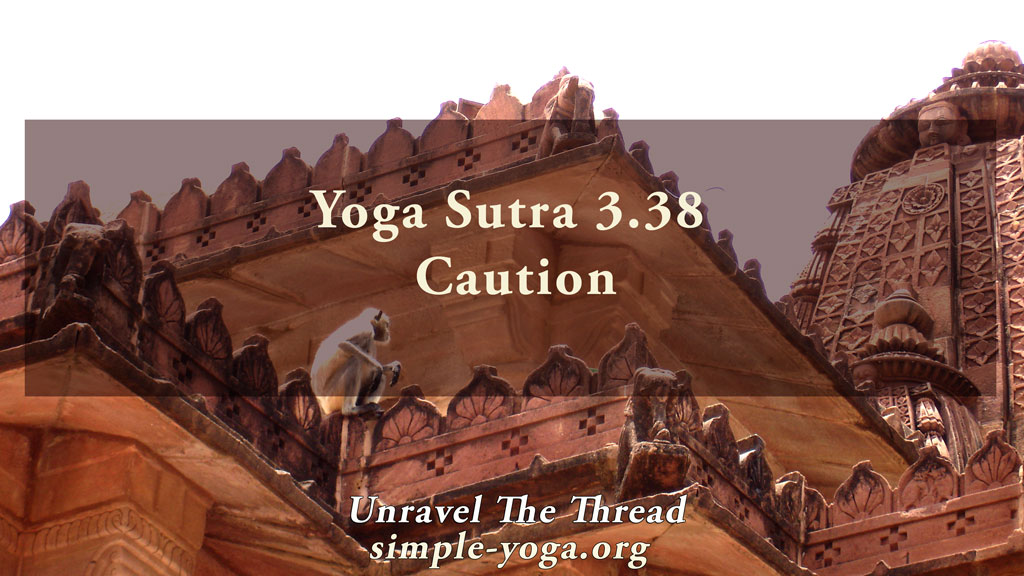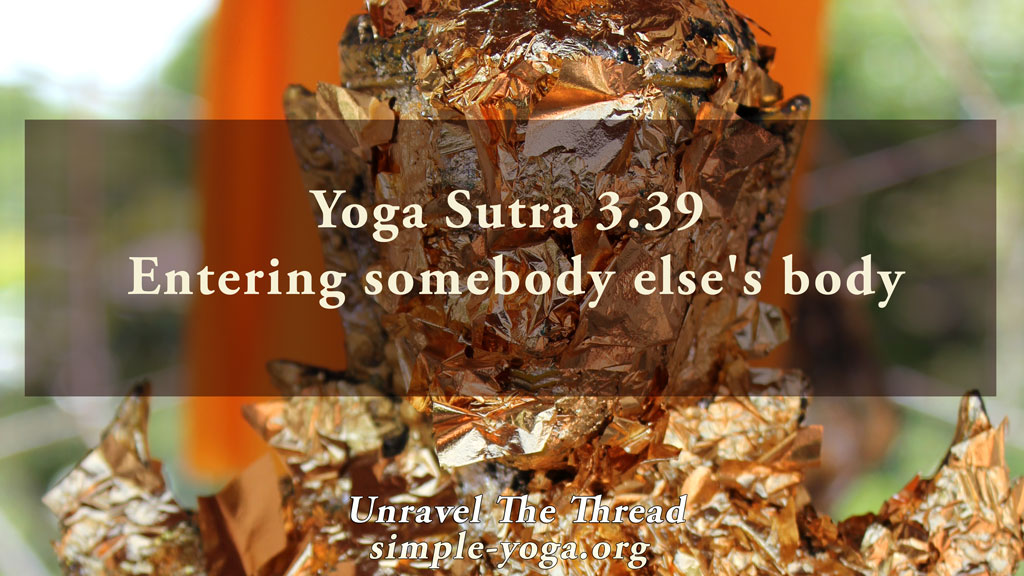
3.38 Caution
January 18, 2022
3.40 Lightness and levitation
February 5, 2022
3.38 Caution
January 18, 2022
3.40 Lightness and levitation
February 5, 20223.39 Entering somebody else’s body

3.39 Releasing the causes of attachment to the physical body and by knowing the conduits through which the vital forces travel, the yogin can enter somebody else’s body.
This is the first of a series of sutras dealing with more subtle aspects of life energy (prana) flow in the human body. The caution in the previous sutra acts as sound advice for practitioners interested in exploring these truly extraordinary attainments. Misidentification with your ways of being (1.4) leads you to confuse your sensations and experiences with your true nature (avidya 2.4). Sutra 2.17 underscores that the cause of all suffering is confusing awareness with what can be experienced. This confusion generates the afflictions (kleshas) listed in sutra 2.3, all of them resulting from not seeing clearly (avidya). Avidya manifests in thinking that you are your body, despite knowing that your body has been changing constantly from its conception. Identification with your body leads to fear of dying, an affliction endured even by the wise (2.9). Yogic action (kriya yoga 2.1) and the eight limbs of yoga (ashtanga yoga 2.28) remove this fundamental confusion. Attachment to your body is one of the most powerful instincts you have. The first part of this aphorism says that once that attachment to your physical body is released, if you know how life energy flows through the body, then you can find the gate through which life energy enters and exists in your body. If those conditions are met, you can detach from your body and enter somebody else’s body. These two requirements offer already a complete program of internal inquiry.
Can you modulate your attachment to your physical body?
Can you release this attachment while remaining appreciative of the miracle that your human body is?
Are you only your body?
Can the samyama from 3.32 to achieve stillness contribute to such a deep stillness that it may be easier to release your attachment to bodily sensations?
To explore the second portion of this sutra you can investigate experientially how your life energy flows through your own body.
For instance, when you first wake up, is there a place where your energy seems to be more noticeable?
In the process of falling asleep, how do your vital energy patterns diminish? As your awake energy transitions towards the restfulness of sleep, does it move to a specific place?
When you feel emotionally drained do you notice any changes in your vital energy?
Is it different when you feel inspired?
As usual, one more way of exploring the meaning of this sutra is by chanting it.
You can choose to chant it in its traditional form with some of the words coming together:
3.39 bandhakāraṇaśaithilyāt pracārasaṃvedanācca cittasya paraśarīrāveśaḥ
बन्धकारणशैथिल्यात् प्रचारसंवेदनाच्च चित्तस्य परशरीरावेशः ॥३९॥
Another option is to chant each word in the sutra individually:
- bandha
- kāraṇa
- śaithilyāt
- pracāra
- saṃvedanāt
- ca
- cittasya
- para
- śarīra
- āveśaḥ
If you prefer, you may listen to the podcast:
This is an excerpt from the book Unravel the thread: Applying the ancient wisdom of yoga to live a happy life
If you find Simple-Yoga.org and Unravel the thread useful, consider supporting my labor with a donation, you may also donate using PayPal or Venmo. Thank you!
